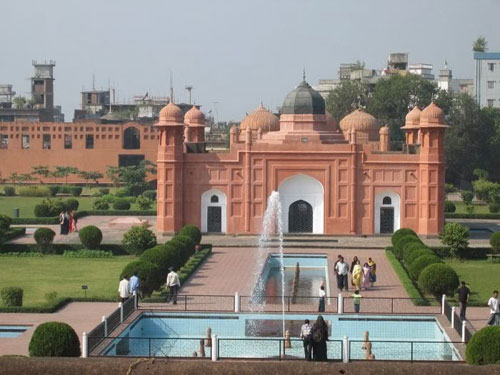Amazing Facts » Amazing Facts About Bhutan

Facts about Bangladesh
Let us take some time off and go through some awesome and interesting information and facts about Bangladesh.
Bangladesh is a tiny nation situated on the northern coast of the Bay of Bengal. Its capital is Dhaka and it has a parliamentary democracy. The population of Bangladesh as on December 2015 is close to 164.5 Million. Its area in square kilometers is about 148,000 square kilometers. The languages spoken are Bangla or Bengali and English. The prominent religions are Muslim and Hindu, with the currency being Taka.
Bangladesh is virtually bordered by India in all three sides and has a tiny border in the southeast with Myanmar.
Bangladesh means the nation of Bengal. It is a low-lying nation shaped by the alluvial plain of the Ganges and the Brahmaputra rivers, which constitutes the largest estuary in the world. The annual floods bring fresh silt to renew fertility of the farmlands. This often creates new islands that can be used for farming. Much of the land is barely above sea level. However, there are hills on the south and of Chittagong. It is during summer (June to September) that the monsoon winds come in, bringing heavy rainfall and cyclones.
Monsoon rains cause recurrent flooding of the country’s lowlands. Close to one-third of Bangladesh, floods during the monsoon. Earthquakes, droughts, and landslides also occur. Another major problem during monsoon is deforestation, which worsens flooding downstream.
Bangladesh is situated next to the largest bay in the world, the Bay of Bengal, which has a size of 2.2 million square kilometers. The government has issued a decree to protect the Sundarbans, the largest mangrove in the world. It is also home to the endangered Royal Bengal tiger, the national animal of Bangladesh.
Majority of the people are farmers, although this is fast changing in the capital and other cities. It is still a poor country, and its main agricultural produce is rice and wheat. It has rich soils that produce three rice harvests a year. However, major cyclones and floods hit the delta, destroying livestock, crops, and people from the lowlands. During the year 1970, a cyclone killed over 300,000 people near the coast. In 2007, another cyclone caused significant damage to the country’s infrastructure in addition to thousands of deaths.
After Indonesia, Pakistan, and India, Bangladesh has the maximum number of Muslim population in the world. The population density is high with over 1,100 people per square kilometer. This makes it one of the most crowded countries in the world.
Close to 45 million people, which is nearly one-third the population lives below the poverty level. In addition, a further significant percentage of these people live in extreme poverty.
Playground of the seasons is a common term associated with Bangladesh. This mainly because of the many number of seasons. Bangladesh has six seasons, unlike the usual four seasons. They are called summer season or grismo, rainy season or barsha, autumn season or sharat, cool season or hemanto, winter season or sheet, and finally spring season or bashonto.
Its other agricultural produce include jute and tea. Its export earnings come mainly from the garments industry. Its main export earners include garments, cotton textiles, jute, leather goods, seafood, and frozen fish. Beef is also another income earner for the nation.
Hoistorywise, Bangladesh was a part of the historic region of the north-east state of the Indian sub-continent, Bengal. However, Bengal was under the British rule until Britain withdrew from India during 1947, and West and East Pakistan were formed. Although West and East Pakistan were united by religion (Islam), and other similar cultures, they were however separated by over thousand miles through Indian terrain.
After about 25 years on 26 March 1971, Bangladesh became an independent nation. Civil war broke out, and with the help of Indian troops, East Pakistan defeated West Pakistan on Dec. 16, 1971. There were a huge loss of lives for Bangladesh and another estimated ten million took refuge in India. It was only in February 1974 that Pakistan agreed to recognize the independent state of Bangladesh.
Television is the principal source of news in Bangladesh. The BBC World Service broadcasts along with other Indian and foreign broadcasts are available in the country. At present, there are over 100 television channels in Bangladesh.
There are over 600,000 internet users in Bangladesh, and its use is unrestricted by the government. People also use the number of online newspaper and news portal. The literacy rate of Bangladeshi is close to 75%.
The country's most popular game is cricket and in 2015, the country nearly made it to the World Cup Semi Finals.
A closing point - While in Bangladesh, always use the right hand while transacting business or passing the food or drinks.
There are many things that one gets to like Bangladesh. However, by far their past and continued contribution to finding simple solutions for problems that impact millions of lives are liked by many.
Was this article useful? What should we do to improve your experience? Share your valued feedback and suggestions!
Help us to serve you better. Donate Now!
